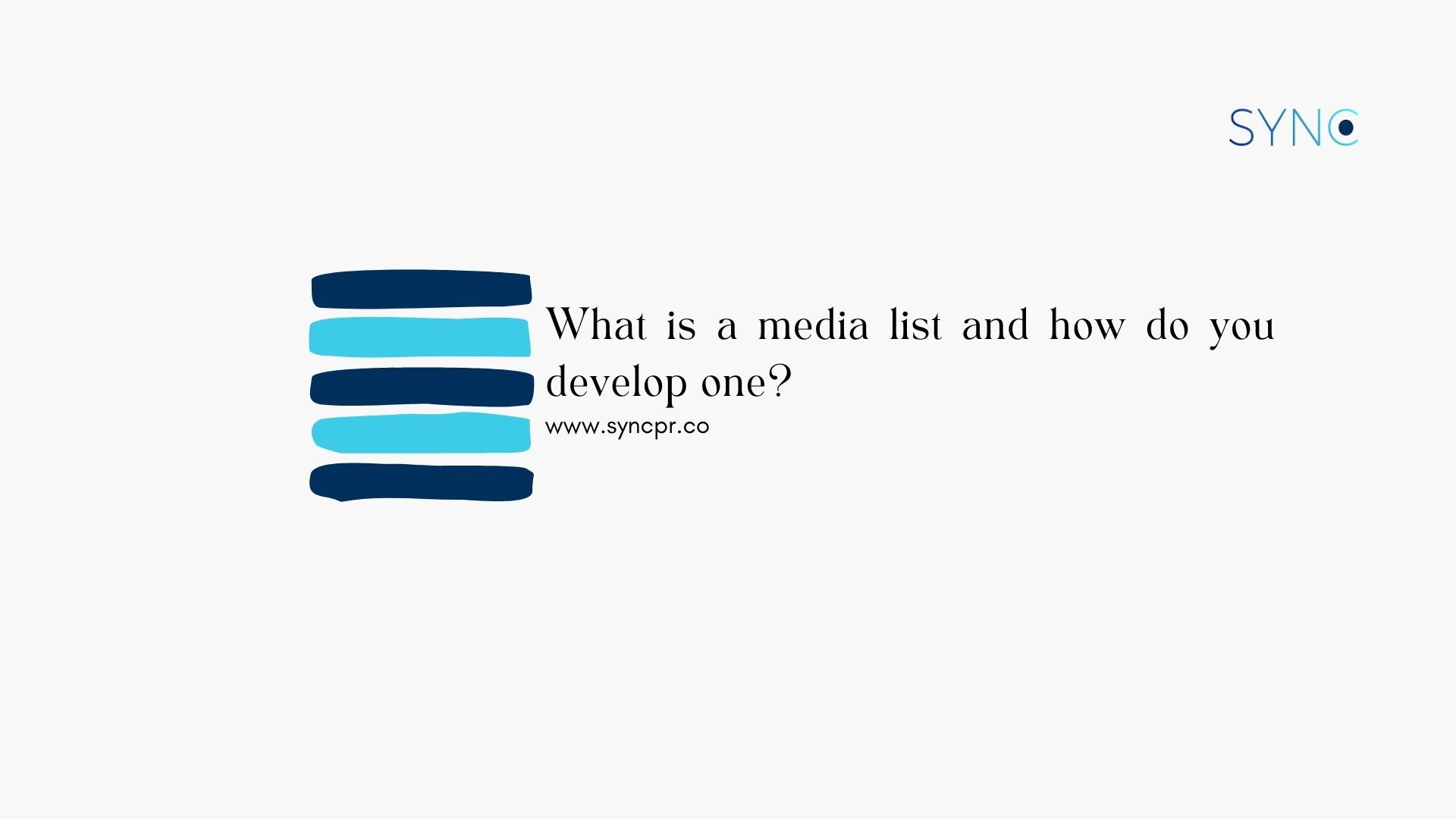PR professionals are responsible for obtaining media coverage for their clients and companies. For PR pros, it is all about getting the story and the brand’s name to the right demographics without spending a fortune on marketing and advertising. The first step in obtaining media coverage is to create a targeted media list. PR professionals can use tailored media lists to send successful pitches to journalists interested in covering your brand’s news. On the other hand, creating a high-quality media list takes more than simply copying and pasting a few names into an Excel spreadsheet. Before we delve into building a media list, we must first know what an effective one is.
What is a media list?
A media list includes media connections, journalists, podcasters, newsletter writers, influencers, and others. PR professionals use media lists when submitting story ideas, press releases, and media alerts on behalf of their company or clients. It is a critical resource that allows them to deliver their news to the proper individuals for maximum media coverage. A good media list is well-organised and constantly updated to keep up with the ever-changing modern media landscape.
What does a media list include?
Creating a high-quality media list can take significant time and effort. At the very least, media lists should include the name, job description, and organisation, as well as their areas of expertise. It should also contain their email address and phone number. Do not forget to include a remarks section for tracking changes in roles, publications, or contact information – all of which are essential for context when sending a release or pitch and to ensure your list is always accurate and up-to-date. Once you’ve compiled a list of the people you want to approach, you can pitch them your story.
How to build a media list
Effective media outreach starts with a targeted media list. In this guide, we’ll explore the key steps and best practices for building a robust network of relevant contacts.

Define target audience
Before developing the media list, you must know your target audiences. Who do you want to tell your story to? Is it a B2B story or a B2C story? More importantly, where would your news have to be for them to find it? Which websites, blogs, news sites, newspapers, and so on are often visited by your target audience? – these are all essential questions you need to ask. Sending out a press release or a pitch is meant to garner attention from the media and hopefully influence people’s actions. Your target audience should have a profile. You must understand who they are and what media they consume. Once you figure this out, you will know which media to add to your media list.
Target your media list
Once you have your target audience, it is time to determine your target media contacts. This phase is very critical in maximising your pitch-to-press conversion rate. There are hundreds and thousands of journalists; hence, look through them carefully and find the best one for your client and your story. Instead of manually searching for journalists, use databases like Telum, Prowly, and Muck Rack to make it easier. The idea is to quickly create the most effective list possible by conducting a simple search via a media contacts database while creating your media list. Remember always to follow the Goldilocks Principle; you don’t want a list that is too small or too big to be effective. You can niche down your target media by using the filters readily available. Your search can be done based on the following:
- Publication type: Filter by newspapers, magazines, websites, podcasts, blogs, etc., depending on your content type and target audience
- Publication focus: Narrow by industry, topic, or niche (e.g., technology, sports, fashion, finance, etc.)
- Geographic location: Target journalists based on your client’s location or the story’s relevance to a specific region.
- Job title: Search for editors, writers, and reporters, depending on your pitch and the type of coverage you seek.
- Language: If your content is in a specific language, ensure your media contacts are comfortable and fluent in that language
- Contact preferences: Some journalists prefer email pitches, while others favour social media outreach. Filter based on their preferred contact method for greater reach and relevance.
Organise your media list
Once you’ve compiled a list of contacts, it’s time to organise and split them. According to a study, around 70% of PR professionals use spreadsheets to organise their media lists. Segmentation categorises your connections based on common factors such as publication type or niche. This helps you to target stories more precisely and send more personalised pitches. You can utilise geography, niche, audience size, frequency, and format to categorise your connections. You can also have a category for national newspapers, local publications, blogs, etc.
You can also prioritise your contacts by A-list, B-list, and C-list based on how likely they are to cover your story and how much influence they have on your audience. Consider adding tags (such as region/location coverage) and custom attributes to further organise your list within a media database, such as stating “has previously covered our company” or “has attended a recent industry event.” This enables far more personalised outreach.
Update your media list
Think of your media list as a constant working document. To keep the content up-to-date, you should make additions and deletions regularly. The information on your media contact list must always be up-to-date and correct to reflect changes in the media landscape. To that end, distribution platforms frequently release the most recent news on media moves. 85% of PR professionals report that media relations is their top priority and consumes at least 25% of their work time. Hence, building genuine relations with contacts is also a good idea to stay updated on employment changes.
One way to keep track of the changes is to monitor bounced emails. Keep an eye out for staff who have moved publications or are not writing anymore. Who is on vacation, who has left the organisation, and who has taken their place; these are vital bits of information you can gather from auto-response emails.
To sum up
A well-constructed media list will give you more media coverage and allow you to continue providing it for a long time. It is critical for developing connections with journalists and other media members. On top of that, having a solid story and being personable with individuals on your lists is an investment that will help you acquire media coverage.
Making a solid first impression and treating people on your list like people, not just people to pitch your story to, is a prudent and fruitful investment that will make future press coverage much more accessible.
Building a high-impact media list doesn’t have to be a headache. Here at Sync PR, we can help you craft a targeted media list, refine your pitches, and build genuine media relationships with the right influencers. Contact us at hello(a)syncpr.co for a free consultation and discover how we can turn your media list into a robust network for long-term success.

